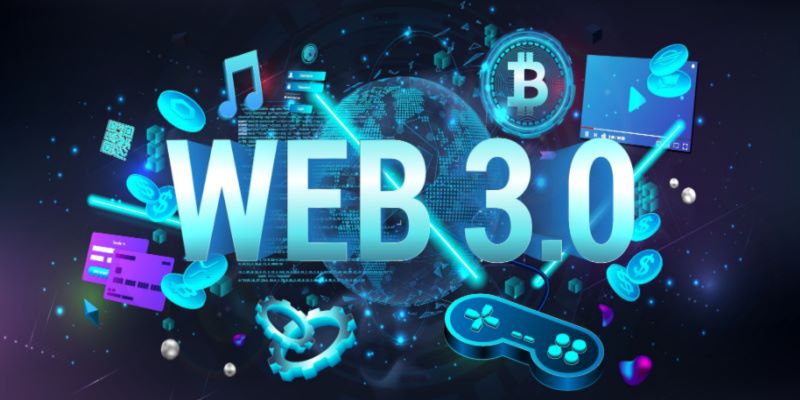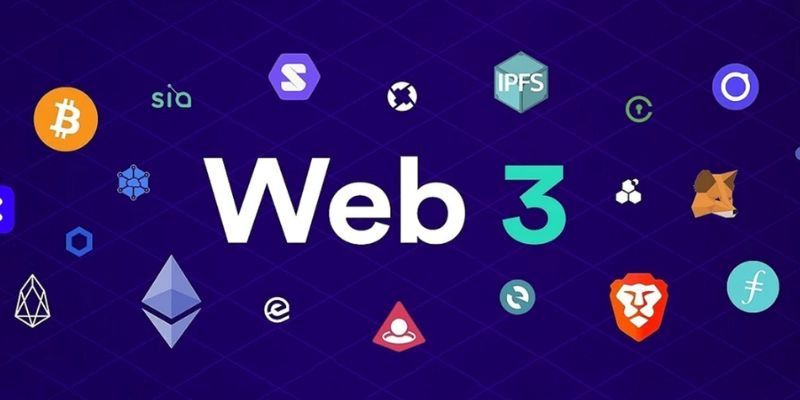Ready to shape the future of the internet? Discover the essential steps to build a decentralized Web3 ecosystem, empowering users and fueling innovation through blockchain technology and community-driven collaboration.
Web3 ecosystem
The Web3 ecosystem represents the next generation of the internet, built on the principles of decentralization, blockchain technology, and token-based economics. It aims to create a more open, transparent, and user-centric online experience.
Importance of Web3 Ecosystems
Web3, fundamentally defined by decentralization, is a technological powerhouse that fuels innovation. It’s recognized as the next evolutionary stage of the internet, harnessing diverse technologies. A deeper look into its mechanics reveals its essence as the semantic web.
Furthermore, web3 integrates AI and Natural Language Processing to enhance user experiences, making the internet more intuitive. By deciphering the intent and context behind user interactions, web3 aims to personalize the online journey. The ultimate vision is a connected web, where data flows seamlessly across different applications and platforms, ensuring accessibility for all.
What are the Important Components of Web3 Ecosystems?
Web3 ecosystems thrive on a foundation of interconnected elements that work in harmony. At their heart lies a decentralization mechanism, be it a blockchain or another innovative technology, that eliminates intermediaries and empowers users. To foster innovation, these ecosystems provide developers with a comprehensive toolkit of resources, including SDKs, APIs, and financial support. A vibrant marketplace showcases the diverse range of decentralized applications (dApps) built on this foundation, demonstrating the potential of Web3.
The lifeblood of these ecosystems is a passionate and engaged community that actively participates in shaping its direction, often through decentralized governance models. Finally, a well-designed tokenomics system incentivizes participation, rewards contributors, and ensures the sustainable growth of the ecosystem. Together, these components create a dynamic environment where decentralization, innovation, and community collaboration converge to redefine the digital landscape.
Blockchain Technology
Blockchain technology serves as the fundamental building block of the web3 ecosystem. To successfully construct a decentralized web3 ecosystem, a comprehensive grasp of blockchain’s inner workings is crucial. At its core, blockchain leverages decentralized networks to facilitate the secure storage and exchange of data. By introducing a novel data structure on a distributed ledger, blockchain eliminates the need for intermediaries, creating a trustless environment for the creation, distribution, and exchange of digital assets.
Crypto Assets
Crypto assets, underpinned by blockchain’s decentralized nature, are digital assets that facilitate secure transactions in the digital realm. Tokens and cryptocurrencies, acting as the native currencies within decentralized applications (dApps), empower users to engage in web3 governance and participate in the evolving landscape of decentralized systems.
Smart Contracts
Smart contracts are an essential component within the web3 ecosystem. These self-executing computer programs automatically facilitate digital transactions upon meeting predefined conditions, thereby eliminating the need for intermediaries. The inherent programmability of smart contracts serves as a powerful tool in developing innovative decentralized applications (dApps) that drive the expansion and capabilities of the web3 landscape.
Decentralized Applications
Web3 envisions a new internet model, combining interactive experiences with decentralization, where intermediaries are no longer required. Decentralized applications (dApps) empower users to engage in activities like buying and selling NFTs, trading cryptocurrencies, and accessing decentralized finance (DeFi) solutions, all without relying on traditional intermediaries.
Interoperability
Interoperability is a fundamental element in the web3 ecosystem, allowing users to seamlessly communicate and utilize their digital assets across diverse platforms. Unlike web2, where data is centralized under corporate control, web3 empowers users with complete ownership and management of their data.
How can you build a Web3 Ecosystem?
Design an Attractive Developer Experience
To cultivate a thriving Web3 ecosystem, prioritizing an exceptional developer experience is paramount. A welcoming and supportive environment not only attracts early adopters but also fosters trust and encourages organic growth through positive word-of-mouth.
Crafting an effective developer experience involves a multifaceted approach. It begins with addressing developer questions and providing comprehensive resources. This includes creating user-friendly code templates, robust developer tools, and maintaining a repository of frequently asked questions.
A dedicated developer site acts as a central hub for documentation, template code, and other valuable resources. Additionally, offering code reviews for partners embarking on ambitious blockchain projects within the ecosystem can be a significant value-add.
Establishing high-availability developer support channels on platforms like Telegram and Discord, along with active community moderators, further enhances the developer experience. These channels foster a sense of community and provide real-time assistance, ensuring developers feel heard and supported.
Continuously iterating on the developer experience roadmap is essential. Regularly gathering feedback and addressing unique challenges faced by developers demonstrates a commitment to their success and helps solidify the ecosystem’s reputation as a developer-friendly environment.
Develop the Infrastructure Ecosystem
When building a Web3 application, Ethereum often emerges as the primary choice due to its open-source tooling, which streamlines development. Frameworks like Hardhat and Truffle enable efficient programming, compilation, testing, and deployment of blockchain applications. OpenZeppelin complements this by offering a collection of audited open-source primitives for Ethereum, enhancing security and reliability.
Decentralization in Web3 extends to its infrastructure layer, namely the blockchain itself. While Ethereum leads the way, other blockchains like Solana are gaining traction. Solana’s open-source framework has fueled remarkable growth in its DeFi ecosystem, with projects like Metaplex and Mango achieving substantial total value locked (TVL) figures.
The backbone of Web3 infrastructure lies in its backend functionalities, which power decentralized applications. These include essential components like node providers, smart contract programming languages, blockchain explorers, Web3 APIs, wallets, and development frameworks.
Understanding the layers within Web3 infrastructure is crucial. The base layer, or layer 1, comprises the blockchain networks themselves. Layer 2 introduces node providers, facilitating network participation. Layer 3 houses APIs, enabling interaction with the blockchain. The fourth layer encompasses web development tools that simplify the creation of user interfaces and front-end experiences.
Mapping the Application Ecosystem
After establishing the foundational infrastructure of your Web3 ecosystem, the next crucial step is to chart a course for the application ecosystem. A comprehensive understanding of Web3’s inner workings will highlight the importance of evaluating the existing teams within your ecosystem. This assessment helps pinpoint any areas for improvement.
An effective Web3 ecosystem team possesses deep knowledge of the missing elements and continuously generates innovative ideas to propel the ecosystem forward. They also provide active support to developers, transforming their concepts into tangible applications.
A successful decentralized Web3 ecosystem incorporates diverse applications, spanning decentralized finance (DeFi), NFTs, the metaverse, play-to-earn games, governance, identity and authentication, prediction markets, enterprise use cases, and social media.
Upon identifying gaps in the ecosystem, curate a list of potential ideas to share with the community. Simultaneously, encourage proposals for new ideas from external sources, emulating initiatives like Ethereum Foundation’s “Request for Proposal” or Y Combinator’s “Request for Startups.”
Throughout the development process, meticulously map teams with the requisite skills to build specific prototypes. Additionally, request formal product specifications outlining milestones and deliverables. For teams struggling to secure funding, offer grants for developer products or tools lacking established business models.
For decentralized protocols, implement a governance forum with a user-friendly interface that allows stakeholders to vote on proposals. This interface should facilitate the review of proposals for grant consideration or delegation, fostering transparency and democratic decision-making.
Define the Growth Strategy
After laying the groundwork and understanding the necessary components, the next phase in crafting your Web3 ecosystem involves formulating a robust growth strategy. This stage goes beyond defining the ecosystem and delves into the tactics required to expand its reach and influence.
A successful growth strategy in Web3 hinges on three core pillars: business development, marketing, and community development. It’s advisable to start by recruiting early adopters who can effectively communicate the developers’ needs and tap into wider networks.
Ideal candidates for growth roles possess structured thinking, meticulous attention to detail, and, crucially, empathy for the user base. Their tactical skills should encompass effective outreach and a deep understanding of the platform’s value proposition.
Crucially, the growth of a Web3 ecosystem is inextricably linked to the success of third-party developers. Unlike traditional models, Web3 thrives on collaboration and relies on external contributors to enrich the ecosystem.
Terraform Labs, for example, prioritized working with smaller developer teams to construct crypto-native infrastructure, recognizing that this approach was essential for creating large-scale applications. The platform actively engaged with developers through events like hackathons, fostering a vibrant community and driving innovation.
As your ecosystem reaches critical mass, it becomes increasingly attractive to larger enterprises in sectors like e-commerce, gaming, and social media. These companies are drawn to platforms with proven infrastructure and turnkey solutions. However, onboarding established players presents its own set of challenges, requiring careful negotiation and collaboration.
Ultimately, attracting larger companies can significantly benefit your Web3 ecosystem by bringing in a vast user base, driving volume, and enhancing brand recognition. By balancing the needs of individual developers with the potential of established enterprises, you can create a sustainable and thriving ecosystem that caters to a wide range of users and use cases.
Establish a Clear Corporate Strategy
Once your Web3 ecosystem has gained traction, it’s time to shift focus towards building a sustainable and resilient corporate strategy. This involves defining your platform’s unique value proposition and identifying the next set of priorities for developers to ensure continued growth and innovation.
Building a decentralized Web3 ecosystem is a complex yet rewarding endeavor. By understanding the fundamental components, fostering a thriving developer community, and embracing the principles of decentralization, you can create a platform that empowers users, drives innovation, and contributes to the evolution of the internet.
Ready to dive deeper into the world of Web3? Stay informed and ahead of the curve with the latest insights and analysis on Financial Trend News. Your journey to building a successful Web3 ecosystem starts here.



